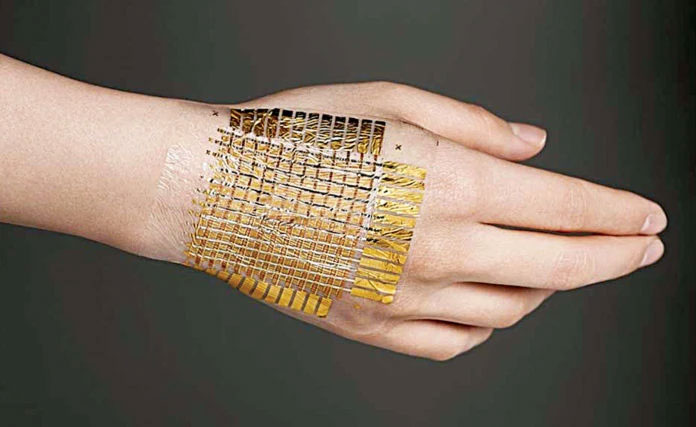China successfully developed electronic skin that can withstand extremely cold temperatures
New electronic skins can wrap around the robot's hand, helping to accurately sense pressure and identify objects in conditions as cold as minus 78 degrees Celsius.

Electronic skin. (Source: Pakistan Today).
Researchers from Tianjin University (China) have developed a new type of electronic skin for robotic hands , capable of operating in environments as cold as minus 78 degrees Celsius.
New technology brings great benefits to the exploration of the country's far north.
According to the research team at Tianjin University's School of Engineering and Chemical Technology, the above type of electronic skin is sensitive, has the ability to stretch and self-heal.
The research team said they have been developing an electronic skin capable of self-healing in all weather conditions since 2020 and the new version has been completely upgraded.
New electronic skins can wrap around the robot's hand, helping to accurately sense pressure and identify objects in conditions as cold as minus 78 degrees Celsius.
Besides, this type of electronic skin also has the ability to self-recover after being damaged in extremely cold conditions . With such features, the new electronic skin could be suitable for scientific research tasks in polar regions.
The research results were recently published in the Journal of the American Chemical Society.
- Successfully studied electronic skin to help disguise as gecko
- Israel invented electronic skin that can heal itself
- Electronic skin helps people with limbs feel pain and objects
- Manufacturing 'electronic leather'
- Developed the first electronic eye in the world
- China suffered the worst cold spell in 30 years
- China is suffering from a record cold spell
- Inventing electronic skin can display heart rate information on your hands
- Measure body temperature with electronic tattoos
- Inventing an electronic skin with the ability to restore itself like a Terminator
- Human skin was born
- Kill cancer cells with cold nitrogen
 13 causes of non-itchy rash
13 causes of non-itchy rash How the mouse with human ears changed the world?
How the mouse with human ears changed the world? The truth about 'fried rice syndrome!
The truth about 'fried rice syndrome! What is dental implant?
What is dental implant?